Vindolanda is a Roman fort and town along Hadrian's Wall that had evolved over the centuries that it was in use by the Romans. It is managed by the same trust that own the Roman Army Museum that I previously posted about. Vindolanda was named after the "white fields", which would have been a result of dew or frost here. It has held many important secrets from the earlier centuries due to the way that the later buildings were built on top of previous buildings and the voids, including the moisture in the soil that helped to preserve important artifacts, such as wood and leather. A museum on site is well worth a visit, and I will be covering this in a different post.
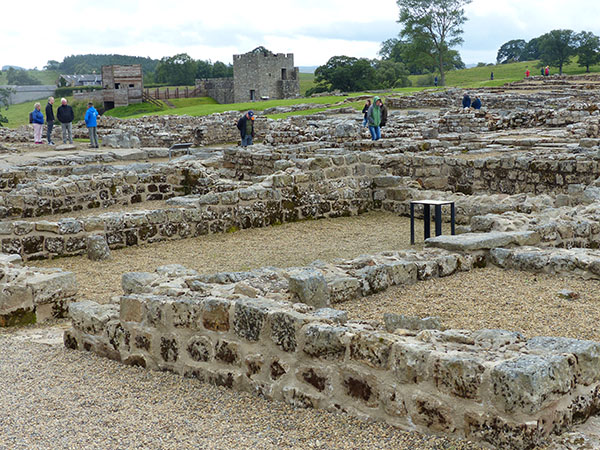
Vindolanda is continuing to give up its secrets as it is currently being escavated.
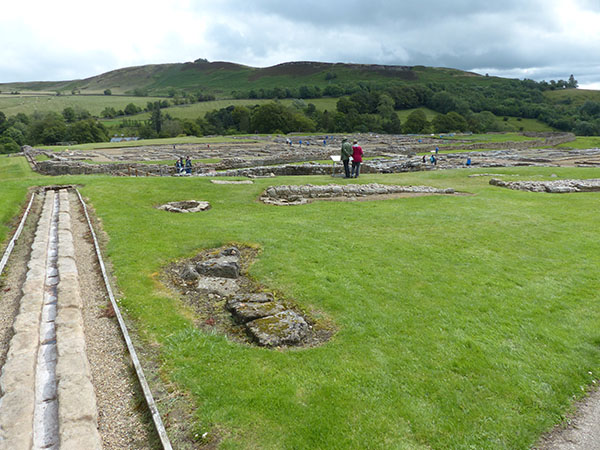
After the site entrance, modern visitors approach Vindolanda from the town along the main road to the fort entrance. The town consisted of baths, workhouses, shops, and houses that merchants, families, and the wider non-military community lived in. Its safety and security at the fort meant that both the soldiers and the townspeople worked hand-in-hand. The townspeople paid a rent based on how much of the building was road-facing. The fate of the town and fort was tied together.
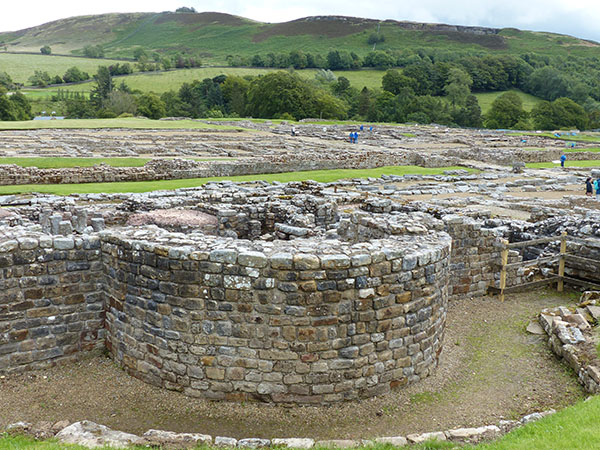
Baths
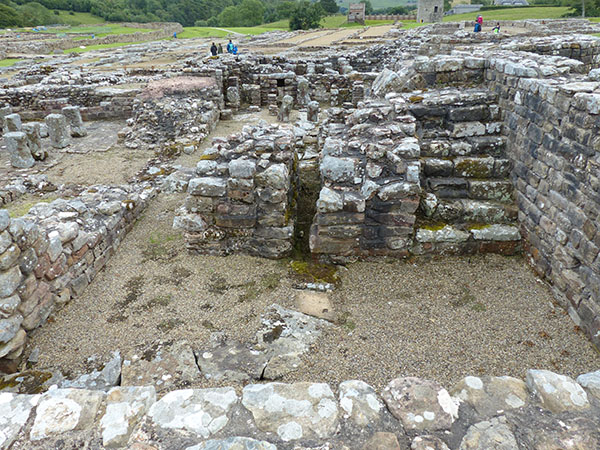
Baths

Baths
In the photograph below, the town is visible in the foreground. The walled structure is the walled Roman fort of Vindolanda.

Workhouses/houses/shops in the shadow of the fort wall
A large house here was built on top of an earlier structure, which would have been an even finer house. This may have been where Hadrian stayed while he oversaw the work of the building of the wall.
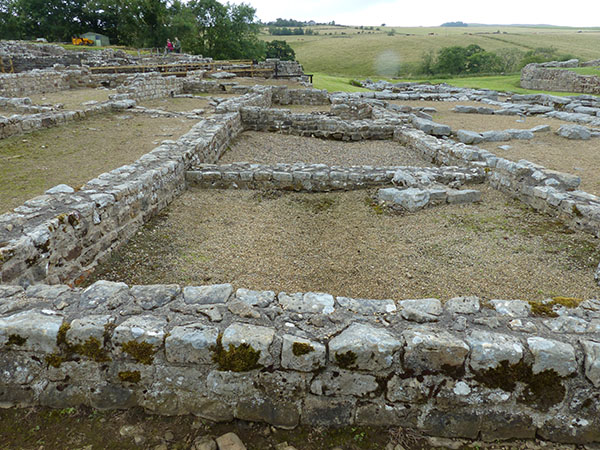
Workshops
The main road through the town leads to the entrance to the Roman fort, where there would have been a gate.

Inside the Roman fort are the commander's house, headquarter's house, barracks, granaries, and temples.
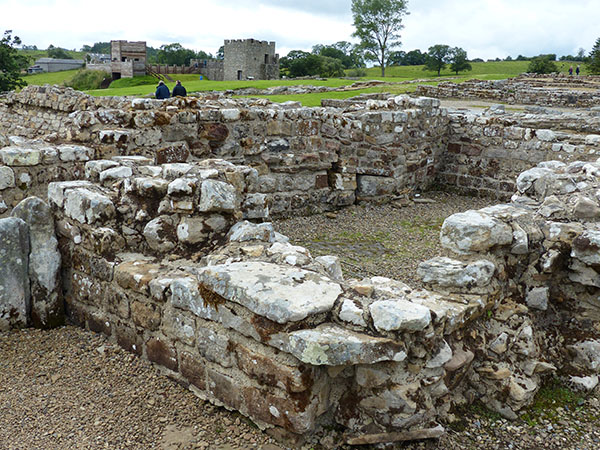
This part of the site is currently being escavated.
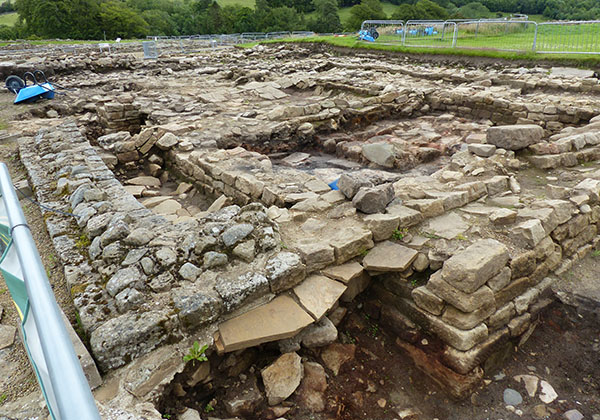
Escavations
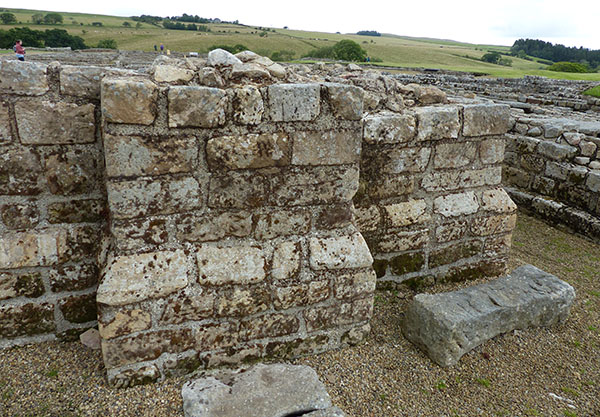
Side of a building with structure of stonework
The granaries and storerooms are located in the fort. These were built raised from the ground to keep the items dry. This would have been grain and other items from the greater Roman empire. Sometimes the soldiers had their favourite foods from home lands shipped over, or products grown in other lands were sent over because these products were not grown in Britain.
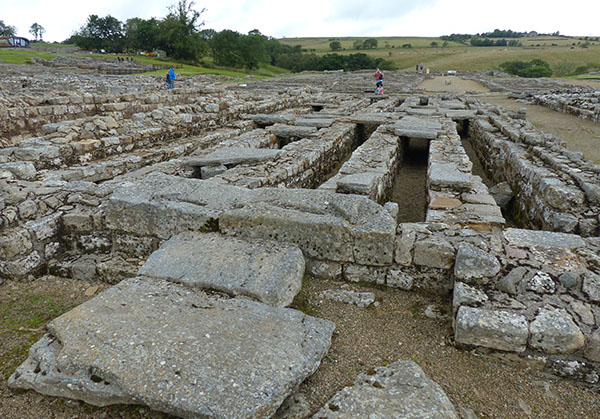
Storerooms

A temple dedicated to Juniper is located in the fort, not far from some of the barracks. An archway separated the barracks from the temple. Carvings were located here and are in the museum, but recreated ones can be seen too. A temple to Juniper is not common, so perhaps this diety meant something to the people who lived in the fort. They would have been auxilary soldiers from other lands of the Roman Empire, enlisted to help for money and Roman citizenship. Many of them stationed here were from the Netherlands, Belgium, and France.
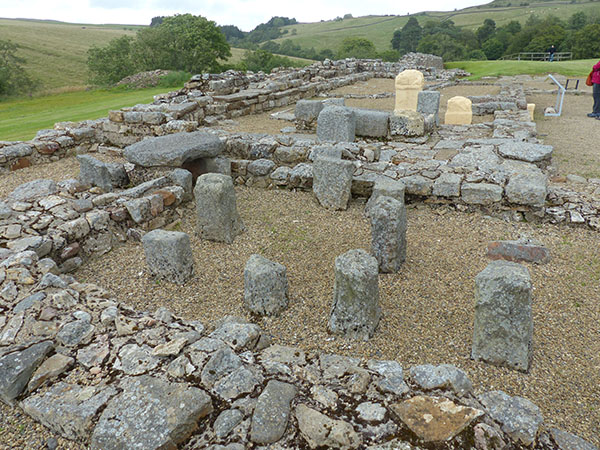
Temple of Juniper
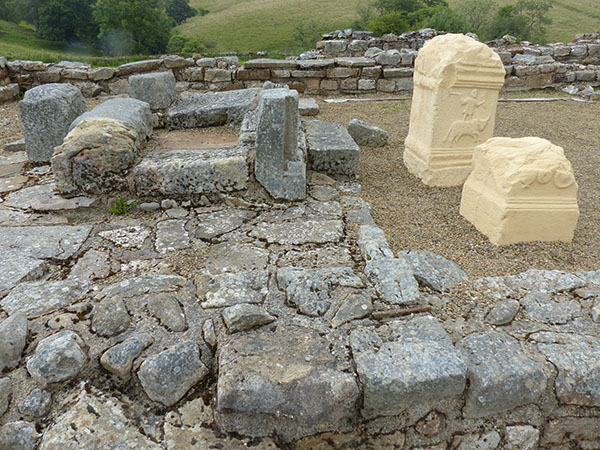
Temple of Juniper replica carvings
One of the barracks leading up to the temple held a sad surprise. A skeleton of a small child of about 10 years of age, was discovered buried in the barracks in the corner. The arms had been bound. Since it was illegal for dead bodies to be buried inside Roman towns and forts, this was a murder. It was determined that the child was probably a female and had not grown up in Britain; she had grown up in the Mediterranian and had moved only a few years prior. As many soldiers lived in one room, more than likely the murder and burial of the child was known by more than one person.
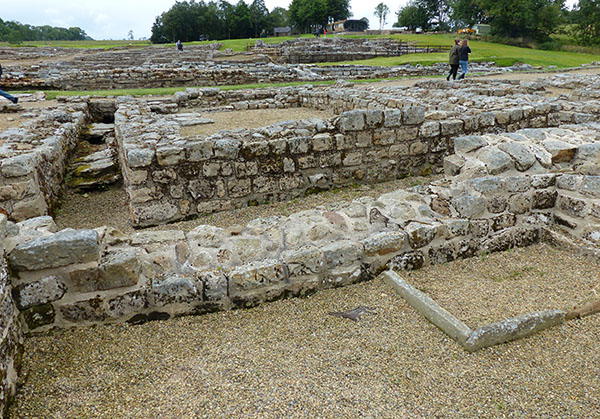
Burial of child in barracks
The below photographs are of the commander's house and headquarters.

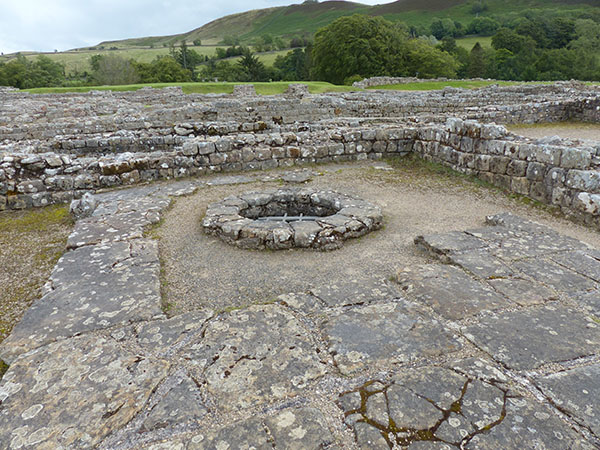
In the headquarters, a stronghold storeroom would have held valuables, such as soldier's pay.
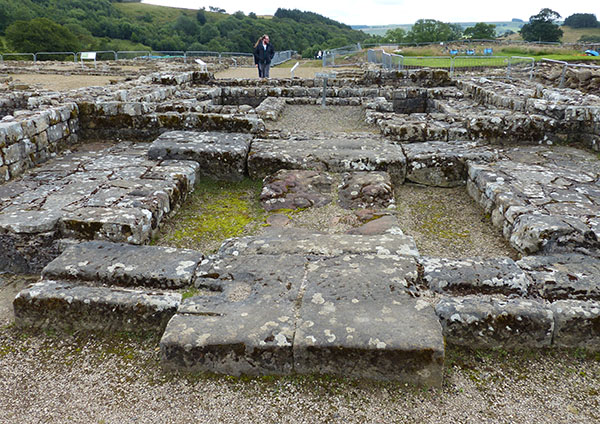
On the edge of the city wall inside the fort, some roundhouses were discovered, but it is unknown what their purpose was.

Down the hill is the museum, which I will cover in another post. Here, a working Roman kiln can be seen, and a milemarker is also seen. This would have given location information.
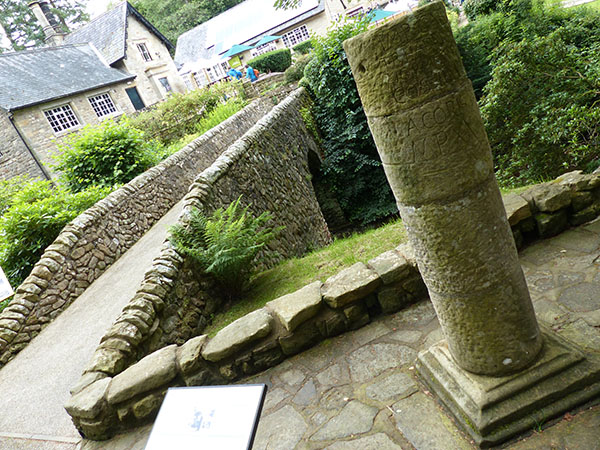
There is also a reconstruction of a temple.

Part of the wall and tower has been reconstructed (below).

I will be covering the museum at Vindolanda in another post, so keep visiting to see more photographs.


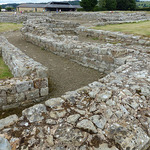
Leave a comment